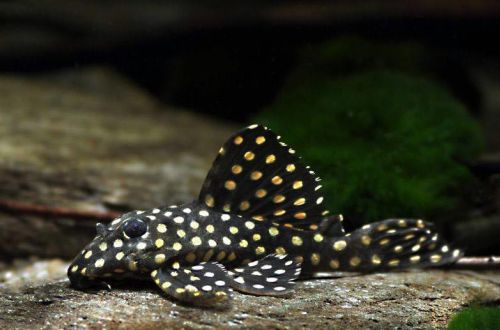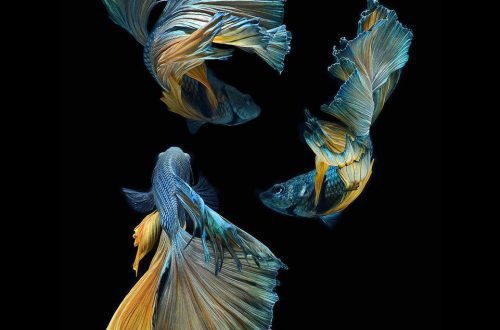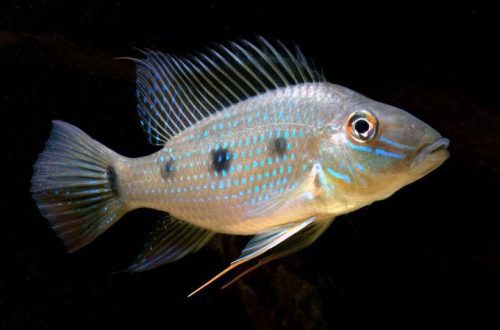
Hypancistrus inšpektor
Hypancistrus inspector, scientific name Hypancistrus inspector, belongs to the family Loricariidae (mail catfish). The name of this catfish is associated with the Latin word Inspectores – observing, pointing to its large eyes. Bright and accommodating fish, relatively easy to keep. Still recommended for aquarists with some experience.

vsebina
Habitat
It comes from South America from the Casikiare river basin in the upper reaches of the Rio Negro in the state of Amazonas in southern Venezuela. Inhabits fast-flowing streams and rivers flowing through hilly terrain. The river bed consists of rocky substrates and is usually littered with fallen trees and branches.
Kratke informacije:
- Prostornina akvarija - od 250 litrov.
- Temperatura – 22-30°C
- Vrednost pH - 5.0-7.5
- Trdota vode – 1–15 dGH
- Vrsta podlage - kamnita
- Osvetlitev - zmerna
- Somornica – ne
- Gibanje vode – zmerno ali močno
- Velikost rib je 14-16 cm.
- Hrana – katera koli toneča hrana
- Temperament - miroljuben
- Vsebina sama ali v skupini
Opis
Adult individuals reach a length of 14–16 cm. The catfish has a somewhat flattened body, a large head and large fins, the first rays of which are modified into sharp spikes. The integuments of the body are hard and rough to the touch due to numerous small spines. The coloration is dark, strewn with bright contrasting dots. Males look slimmer, and the spots have a yellowish tint. Females are stockier with white speckles in coloration.
Hrana
In the wild, they feed on small aquatic invertebrates and other organisms. The aquarium should be fed a variety of foods that combine live, frozen and dry foods such as bloodworms, daphnia, brine shrimp, sinking flakes and pellets.
Vzdrževanje in nega, ureditev akvarija
The optimal size of the aquarium for 3-4 catfish starts from 250 liters. It is recommended to keep in conditions reminiscent of the natural habitat: sandy-stony ground with boulders of variable size with the addition of natural or artificial snags and other decor that can serve as a shelter for these fish. Live plants are not required.
Hypancistrus inspector is sensitive to water quality and reacts poorly to even a slight accumulation of organic waste, so a weekly water change of 30-50% of the volume is considered mandatory. In addition, the aquarium is equipped with a productive filtration and aeration system (often they are combined in one device).
Vedenje in združljivost
A peaceful calm fish that will not cause problems to other inhabitants of the aquarium. Compatible with other non-aggressive and non-territorial species of comparable size. Can live alone or in a group. It is not necessary to settle other Hypancistrus together in order to avoid hybridization.
Vzreja / vzreja
Under favorable conditions (water quality and a balanced diet), breeding is possible, but it is not an easy task to ensure them. Among the design elements, it is necessary to provide shelters that will become a spawning site. In the artificial environment, the breeding season does not have a clear time frame. With the onset of the mating season, the male occupies a site at the bottom of the aquarium and proceeds to courtship, luring females. When one of them is ready, the couple retires to a shelter and lays several dozen eggs. The female then swims away. The male stays to protect and take care of the clutch until the fry appear.
Ribje bolezni
Vzrok večine bolezni so neprimerni pogoji pridržanja. Stabilen življenjski prostor bo ključ do uspešnega vzdrževanja. V primeru simptomov bolezni je treba najprej preveriti kakovost vode in, če se odkrijejo odstopanja, sprejeti ukrepe za odpravo stanja. Če simptomi ne izginejo ali se celo poslabšajo, bo potrebno zdravljenje. Preberite več o simptomih in zdravljenju v razdelku o boleznih akvarijskih rib.





